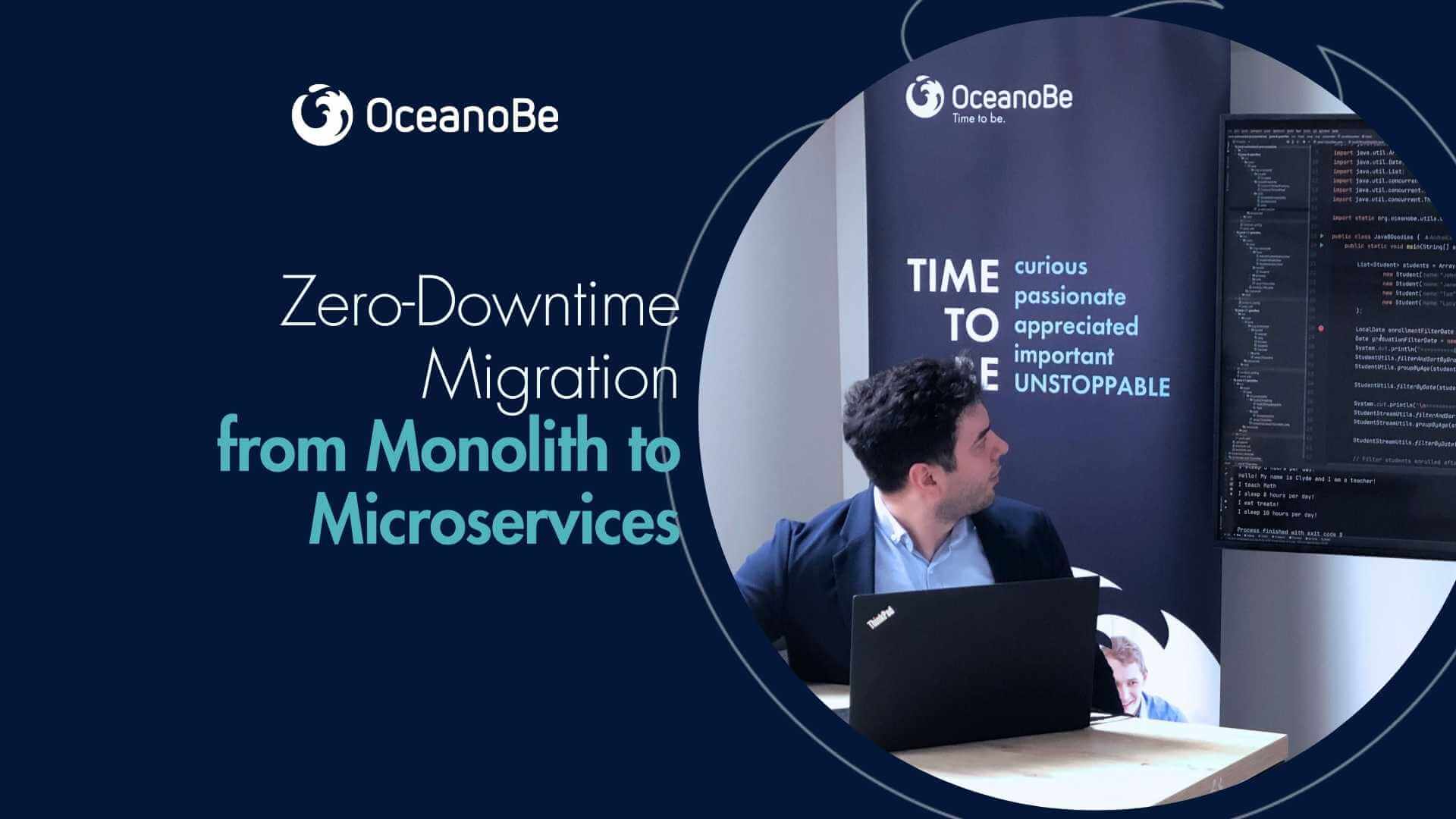Strangler Fig Strategy
Zero-Downtime Migration from Monolith to Microservices
Zero-Downtime Migration from Monolith to Microservices

Legacy systems are the backbone of many banks and financial institutions. They run critical workloads—from payments and risk engines to compliance checks and reporting—but their monolithic design often creates bottlenecks, scalability issues, and slower time-to-market for new features. Migrating away from them is no small feat: downtime is not an option, compliance and traceability must remain intact, and the systems must continue to process millions of transactions daily.
The Strangler Fig Strategy has emerged as one of the most pragmatic and risk-aware approaches for modernization. Inspired by how a strangler fig tree grows around its host and gradually replaces it, the pattern enables teams to incrementally carve functionality from the monolith into microservices—all without interrupting business operations.
In this article, we’ll walk through the practical steps of applying the Strangler Fig pattern in fintech workloads, exploring the tools and techniques that allow zero-downtime migration.
In other industries, businesses may tolerate downtime during system rewrites. In banking and payments, that’s impossible. Every second of downtime risks financial losses, SLA breaches, and compliance violations. Regulators also expect continuity of service, full audit trails, and no disruption to customer experience.
The Strangler Fig Strategy offers a path forward by avoiding the “rip-and-replace” approach. Instead of rewriting an entire monolith in one risky move, functionality is replaced gradually and released safely in production alongside the legacy system.
The first step is introducing an API façade in front of the monolith. This façade acts as a routing layer that abstracts the backend implementation from the consumers (e.g., mobile banking apps, payment processors).
All requests go through the façade.
Initially, all traffic is routed to the monolith.
As microservices are developed, specific requests can be redirected away from the monolith to the new service.
For fintech, this façade also becomes the single enforcement point for compliance checks, observability, and security logging—ensuring regulatory traceability regardless of where the logic resides.
Migrating effectively requires understanding the business domains inside the monolith. Rather than starting with the most complex components, teams should identify self-contained domains that can be cleanly extracted.
Common candidates in fintech platforms include:
Customer onboarding flows (KYC, AML checks)
Payment authorization services
Transaction history APIs
Reporting and compliance exports
Each carved-out domain becomes a new microservice, integrated into the façade, while the rest of the system continues to run in the monolith.
To ensure seamless rollouts, migration strategies must incorporate progressive delivery techniques:
Canary Releases: Route a small percentage of requests to the new microservice, monitor for errors, and gradually increase traffic.
Blue-Green Deployments: Maintain two production environments—one running the monolith, the other running the microservice—switching traffic instantly once validated.
Feature Flags: Control new functionality rollout at runtime without redeployments, giving business teams confidence to rollback instantly if needed.
These techniques are particularly powerful in financial services where latency SLAs and error budgets are tightly controlled.
One of the biggest challenges in strangler migrations is maintaining data consistency across systems. In banking, where transaction integrity and reconciliation are paramount, this step cannot be overlooked.
Implementing an event bridge (e.g., using Kafka or cloud-native messaging services) ensures:
The monolith continues to publish events as before.
New microservices consume relevant events to maintain synchronized state.
Both systems remain consistent until the monolith module is fully retired.
Event-driven architecture not only supports the migration—it also lays the groundwork for a more resilient, scalable, and real-time fintech platform.
Unlike consumer tech, banking workloads demand traceability and regulatory oversight throughout the migration. Each step of the strangler approach must embed:
Centralized logging and audit trails for all requests, whether processed by the monolith or microservices.
Security controls at the API façade level, enforcing encryption, authentication, and authorization.
Monitoring and alerting (Prometheus, Grafana, ELK) for transaction latency, error rates, and service health.
This ensures regulators and internal audit teams can verify compliance—even during transition phases.
At OceanoBe, we’ve seen firsthand how the Strangler Fig Strategy delivers results in highly regulated environments. Some of the key lessons we emphasize include:
Start small, but start smart: Pick domains that are critical enough to add value, but not so core they block progress if migration stalls.
Automate everything: CI/CD pipelines, compliance checks, regression testing—automation reduces risk and accelerates delivery.
Expect hybrid states: For months, or even years, the system will be part-monolith, part-microservices. Designing monitoring, security, and data sync for this hybrid state is non-negotiable.
Communicate across teams: Developers, compliance officers, and business stakeholders must stay aligned. Transparency avoids missteps that could impact customer trust.
The Strangler Fig Strategy is not just a migration technique—it’s a blueprint for sustainable modernization. For banks and fintechs, it offers the rare combination of zero downtime, regulatory compliance, and incremental innovation.
By leveraging façades, progressive delivery, event-driven synchronization, and built-in observability, financial institutions can confidently evolve from legacy monoliths to modern microservices architectures.
At OceanoBe, we help clients navigate this journey, balancing technical excellence with regulatory realities, ensuring that modernization doesn’t just replace old systems—it unlocks resilience, scalability, and future growth.